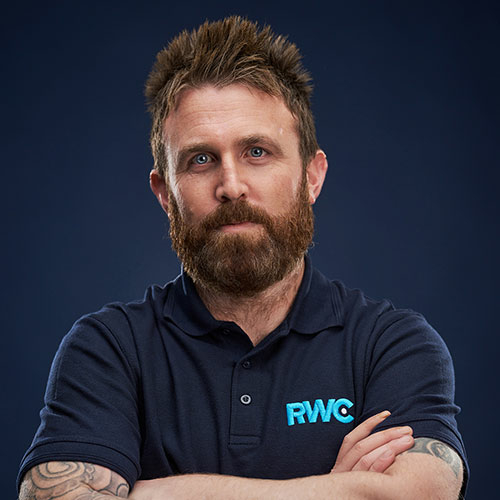Knowing what backflow prevention device to use and where

We often take the quality of the UK’s water supply for granted. It is, after all, one of the cleanest water supplies in the world. But UK waters are at risk, as our reservoirs get closer to running dry as an effect of ever hotter summers, we need to protect the cleanliness of our fleeting water supply. Therefore, preventative steps are key to ensuring that our water remains as clean as possible when it reaches our taps.
One of the main threats to water sanitation is backflow, which happens when foul water is pushed back into our potable water supply. This foul water can be divided up into 5 “fluid categories” as outlined by WRAS, with fluid category 1 posing the least risk and fluid category 5 posing the maximum risk. Therefore, as per water regulations, each category requires a different standard of preventative action. In this blog, we help you decide which backflow prevention device to use and where to install it, so we can ensure that our water supply is kept clean.
Why does backflow occur in the first place?
In most cases, backflow happens as a result of pressure failure. Typically, the pressure of the mains water supply to domestic properties is between 1 and 4 bars of pressure. This allows the water to flow safely from taps and other outlets and protects the water supply from contaminants. Where the problems arise is when this internal pressure fails. Sudden drops in pressure, due to burst pipes or supply maintenance, can create a vacuum effect, pulling emitted water backwards. Whilst this is mostly seen on construction sites, and nursing homes, it can just as easily occur in domestic homes as a result of small pressure drops. Exterior hoses or sprinkler systems with built in fertiliser dispensers are usually the main culprits here, as they are susceptible to ingesting the chemicals from fertilisers back into the mains water supply.

How can you prevent backflow?
The first thing to know when it comes to installing solutions, such as a backflow prevention device, to prevent backflow is the risk level of the area where the solution is required, and, to what fluid category that risk corresponds too within the water regulations. In buildings posing a category 1 or 2 level risk, you must install a single check valve at the very minimum, with a double check valve being ideal. Additionally, category 3 level buildings must have a double check valve installed as per regulations. Double check valves, such as the Floguard Double Check Valve from Reliance Valves, protect against the risk of backflow and back siphonage occurring in the first place. The valves contain a check cartridge that, under normal conditions, is held closed from pressure within the system. When vacuum conditions occur, the suction causes the check cartridge to open and air to flow through, counteracting the vacuuming effects of lost pressure.
Science labs, healthcare buildings, or other such buildings where toxic substances are regularly used, tend to be the only buildings that are classed as fluid category 4 or fluid category 5 level risks. Such buildings must have a more specialised reduced pressure zone valve (RPZ valve) installed at every point that connects to the mains water supply. These valves are intended to prevent contaminants from entering the water mains. As an installer you will be aware that only WRAS approved RPZ installers can carry out this work, which is outlined on the WRAS website.
Seeing as it is relatively common for the water supply to commercial buildings to experience disruption, RPZ valves require regular maintenance. Therefore, the two main things to consider when selecting an RPZ valve for your installation are the ease of installation and maintenance. Equally, having a safe and reliable backflow prevention device, such as Reliance Valves’ BA RPZ Valve, is essential. The flat faced union MBSP connections of this WRAS approved product is designed to allow for regular testing and maintenance, preventing the risk of potential contamination. Furthermore, any back-fed water is diverted to a waste pipe in the case of a pressure drop or back siphonage, and therefore, away from the primary supply and drinking network.

How can you retrofit RPZ valves?
Commercial properties built prior to 1999 are particularly at risk of severe backflow happening, as these buildings were built before the UK Water Supply Regulations (Water Fittings) or Scottish Bylaws were implemented. It is likely that no RPZ valves were installed in these buildings at all.
Whilst retrofitting double or single check valves is a relatively straight forward process, retrofitting a RPZ valve can be slightly more challenging. Seeing as most buildings built prior to 1999 did not account for these rather large valves, there is usually limited space for them to be installed. For these projects especially, Reliance Valves have designed the Compact RPZ Valve, which comes with ½” or ¾” size pipe connections. This means that the backflow prevention device can be installed in these confined spaces and can be fitted vertically or horizontally depending on the unique requirements of the building.
Who can you speak to for further information?
Backflow can take several forms, each of which poses a significant health risk to the occupants of a building. With our water supply being put under ever increased strain, it is important that we do not contaminate the supplies that we have. Therefore, as an experienced installer, it is essential to know where backflow can occur and to ensure that preventative measures are put in place.
Need Technical Support?
If you would like to find out more about backflow prevention measures or the valves required, please visit get in touch.
